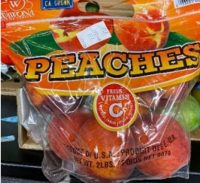One year ago the FDA held an at-capacity public meeting to discuss its latest initiative, the New Era of Smarter Food Safety. At the time, the agency was planning to release the blueprint for the New Era in the spring of 2020. In fact, the FDA was just days away from unveiling it when the COVID-19 pandemic hit in March. The blueprint was put aside and it was all hands on deck, as the agency worked with the food industry to ensure companies continued operating, as they were deemed a part of America’s critical infrastructure. From there, the agency navigated through uncharted waters with the food industry and its stakeholders. It signed an MOU with USDA in an effort to prevent disruptions at FDA-regulated food facilities and address shortages of PPE, disinfection and sanitation supplies. It announced that it would conduct remote inspections and extended the comment period for the Laboratory Accreditation Program Proposed Rule. It released a COVID-19 food safety checklist with OSHA to help guide companies through employee health, social distancing, and the operational issues that have entered into play as a result of the pandemic. Food companies and the supply chain were facing an enormous challenge.
“I always thought we had one of the best food systems in the world… by and large we have an amazing food system,” said Frank Yiannas deputy commissioner for food policy and response during last week’s keynote address at the 2020 Food Safety Consortium Virtual Conference Series. “We just experienced the biggest test on the food system in 100 years. Have we passed the test? I don’t think anyone would say we scored 100%… but by and large we passed the test.” Yiannas added that COVID-19 has exposed some strengths and weaknesses in the food system as well. He also emphasized a point that he has been driving home throughout the pandemic: “The virus that causes COVID-19 is not a virus that is transmitted by food. It is a respiratory virus and generally transmitted in very different ways.”
The FDA released the blueprint for the New Era of Smarter Food Safety, which incorporated some lessons learned from COVID-19, in July. Traceability is a big part of agency’s new era initiative, and the pandemic further put a spotlight on the need for better tracking and tracing in the food industry. And under FSMA, FDA is required to “establish a system that will enhance its ability to track and trace both domestic and imported foods”. In working to meet this requirement, FDA proposed the FSMA rule on food traceability last month.
Yiannas said the proposed rule has the potential to lay the foundation for meaningful harmonization and called aspects of the proposed rule game changing. It establishes two critical components that are the leading edge of food traceability: It defines critical tracking events (i.e., what are the types of events in the food system that required those events to be kept) and key data elements (i.e., the data elements that must be captured at those critical tracking events). “These two things are big ideas for traceability,” said Yiannas. “They will allow us to harmonize how traceability is to be done, allow us to scale and allow for greater interoperability.” The proposed rule also creates a traceability list that identifies foods based on a risk-ranking model for food tracing.
FDA is encouraging comments on the proposed rule and is holding three meetings (November 6, November 18 and December 2) to discuss the proposed traceability rule. “We are going to create the final rule together,” said Yiannas.
As part of a special offering, Episode 4 has been made available for viewing on demand for free. Register to view the on-demand recording.















